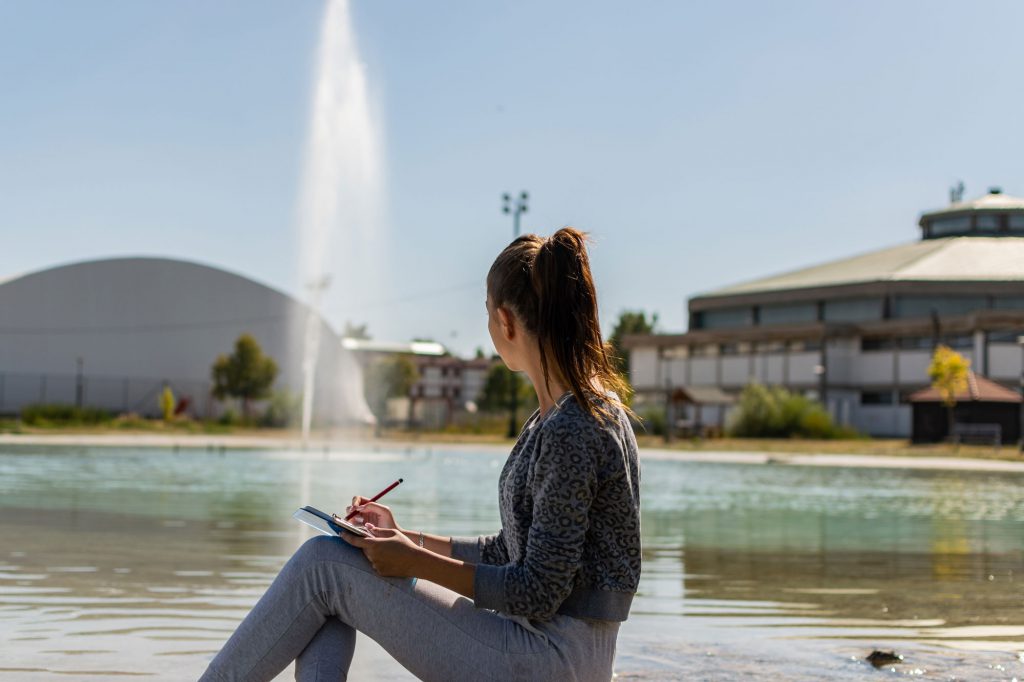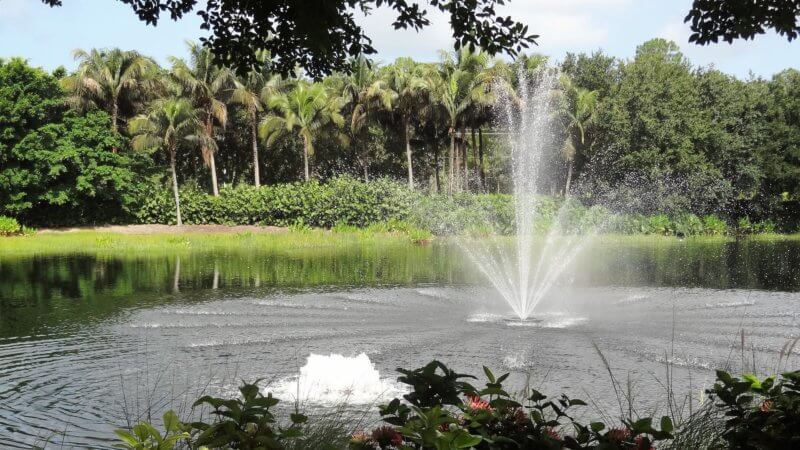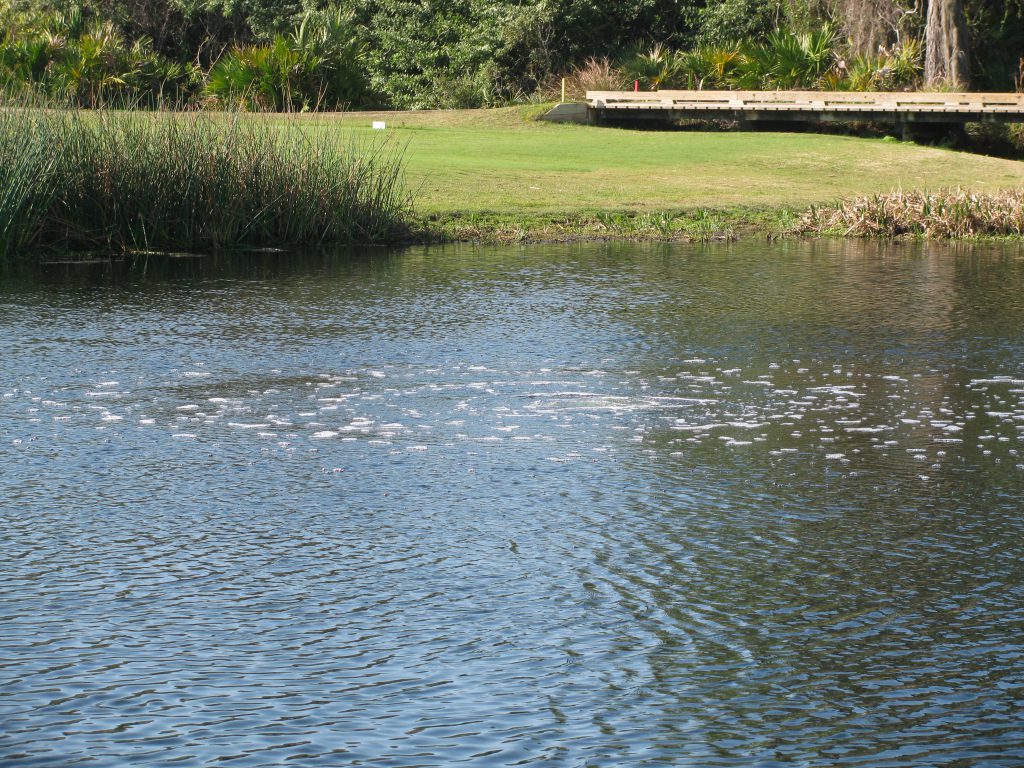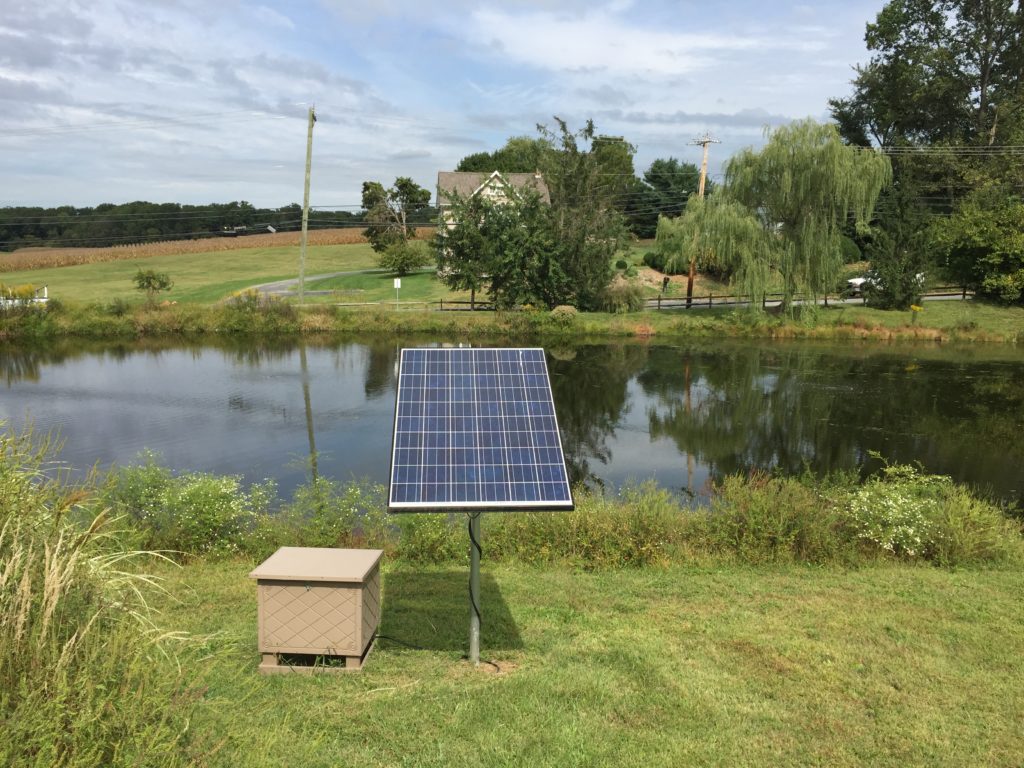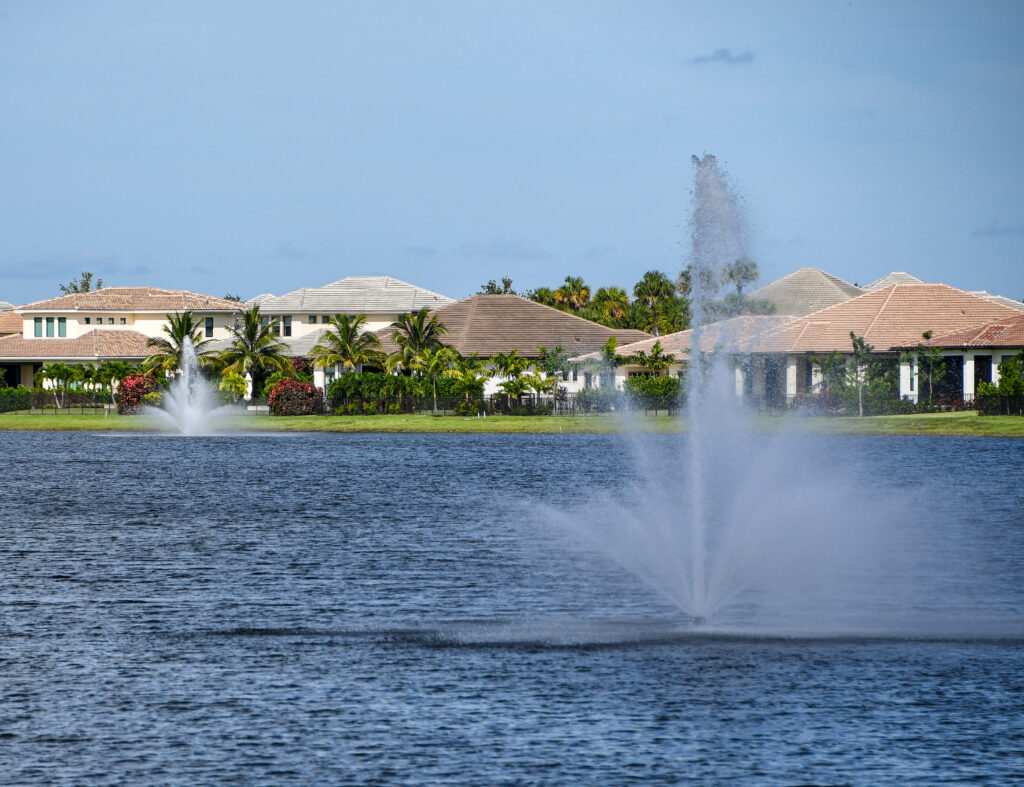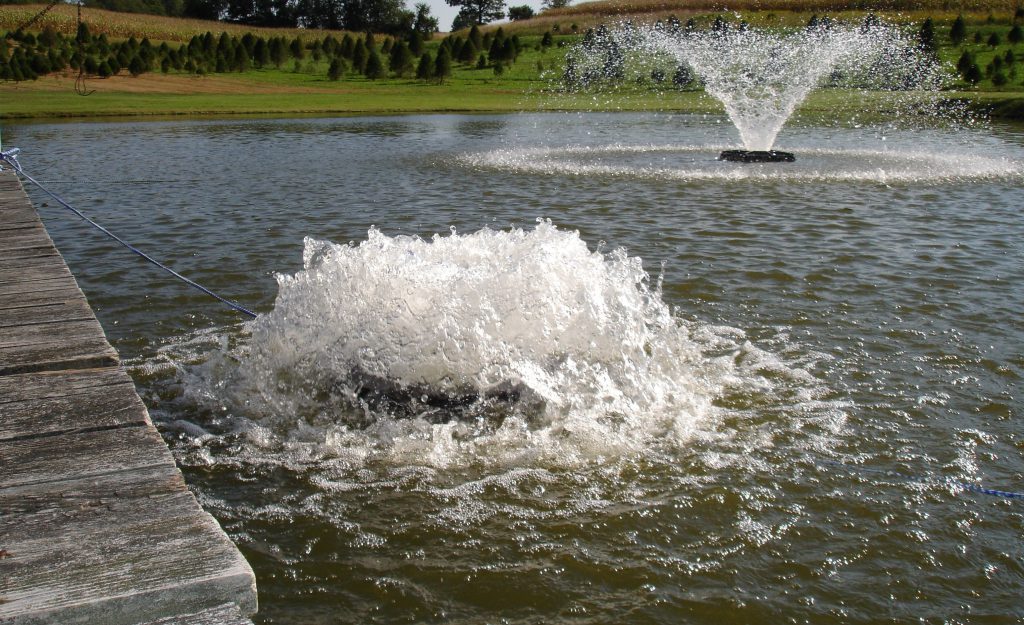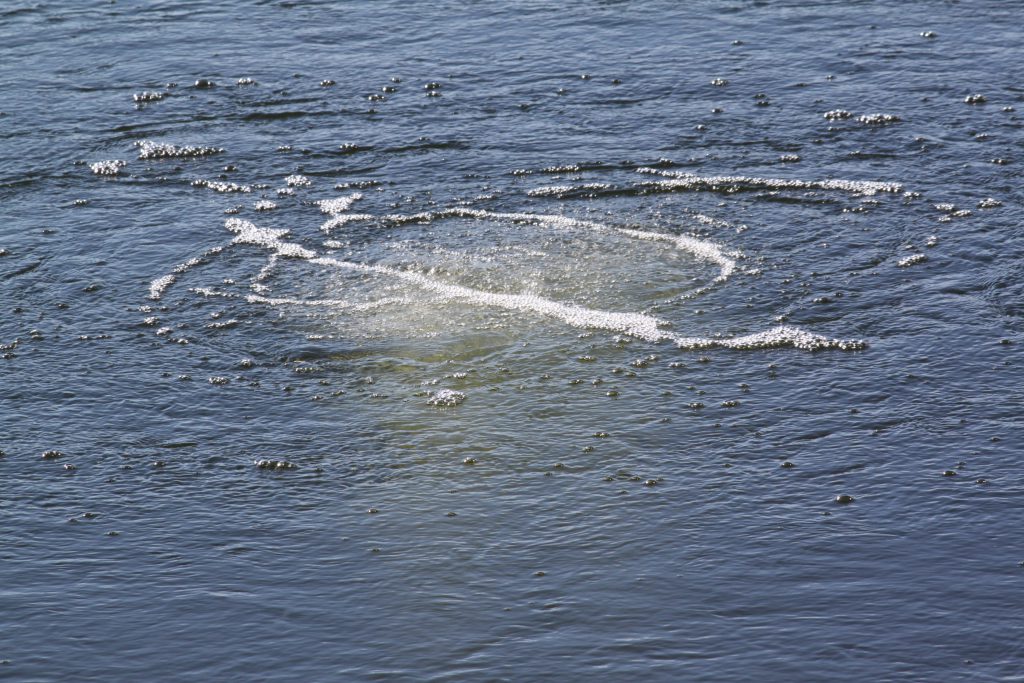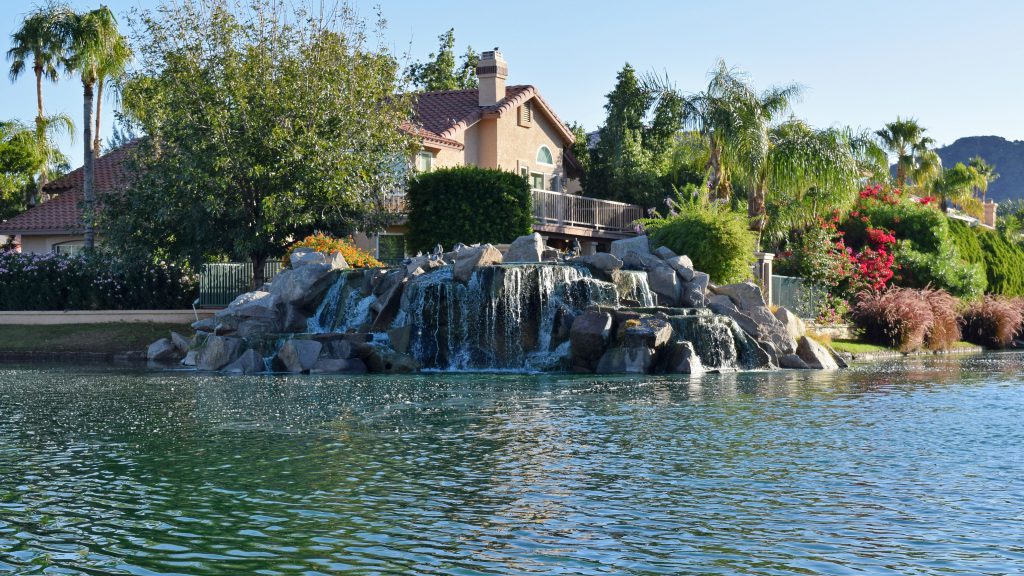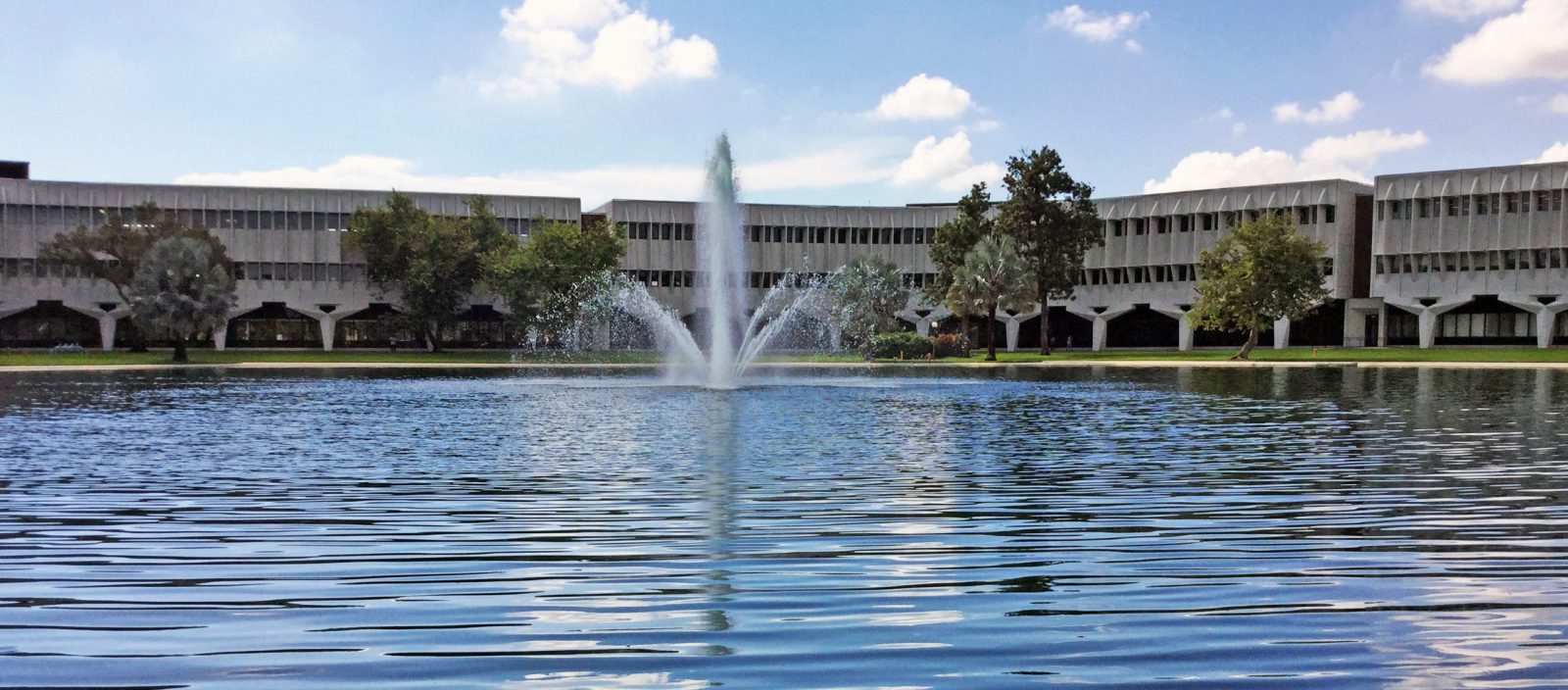
The Types Pond Aeration Systems and Their Benefits
Whether you’re just getting started on your lake and pond management journey, or you have an existing management program, one of the tools most often recommended by professionals is aeration. Aeration systems, which can include floating fountains, surface aerators, submersed aerators, and more advanced solutions, provide many functional and aesthetic benefits that can enhance experiences in communities, golf courses, municipalities, and private properties. But most importantly, they provide an eco-friendly way to supply man-made and natural ponds with dissolved oxygen.
What is Dissolved Oxygen?
Dissolved oxygen (DO) is a measure of how much oxygen is dissolved in the water – the amount of oxygen available to living aquatic organisms. DO levels directly correlate with water quality and give aquatic experts insight into the overall health of the ecosystem. Aquatic animals like fish and invertebrates require DO to breathe and function. In the case of low or fluctuating DO levels (which can occur alongside algae blooms, plant and algae die-offs, or during the winter months), aquatic life can die in large quantities in events known as fish kills.
The Benefits of Introducing Dissolved Oxygen
- Reduces organic sediment or muck
- Breaks down excess, unwanted nutrients
- Supports aerobic digestion and oxidation
- Improves fish habitat
- Reduces stagnant water and midge and mosquito breeding habitat
- Contributes to the visual aesthetic lake or pond
- Helps increase property values
- Mitigates foul odors
- Supports community satisfaction with the waterbody
What Is A Pond Aeration System?
An aeration system is a series of equipment components designed to introduce dissolved oxygen into a waterbody for its quality and health. There are two main types of aerators – surface and submersed.
Surface Aeration
A surface aerator propels water into the air where it then falls back into the water. This creates a circulation of oxygenated water as well as surface disruption. Traditional surface aerators are not as aesthetically pleasing as floating fountains, which spray water into the air in unique patterns, but they both provide comparable results.
Submersed Aeration
In contrast, with a submersed aeration system, you may see small bubbles on the water’s surface; however, most of the aeration is happening beneath the water. Submerged pads, mounted with diffusers, connected to shore-mounted air compressors disperse fine bubbles to aerate the entire water column from the bottom up to the surface. Key components that operate these systems include a compressor, air tubing, and diffuser stations.
Solar-Powered Aeration
Surface and submersed aeration systems traditionally run on electricity, but for rural or hard-to-reach lakes surrounded by homes and stormwater management facilities, a solar-powered system can help avoid the costs of digging and setting up power services and ongoing electrical needs. Decision makers should note that while these systems have backup batteries, they may have difficulty running through the night or after several overcast days. They should also be placed carefully to avoid shadowing from trees or other obstructions.
The 4 Kinds of Pond Fountains & Aeration Systems - And Their Pros & Cons
There are several kinds of fountains and aeration methods that suit specific needs – such as targeting the bottom portion of the water column versus the upper portion – and operate under certain circumstances.
1. Floating Fountains
Floating fountains work by propelling water into the air to create a surface display. When it lands back on the surface, it creates turbulence that transfers oxygen into the water. Especially prominent in residential communities, floating fountains offer both aeration optimization that are ideal for shallow ponds and aesthetic appeal. They can also come in different water designs with LED lights and more. Not all fountains “aerate” a pond so it’s important to work with an authorized installer to design the best system for your waterbody.
Pros:
- Efficient for small ponds in uniform shapes or at depths less than six feet
- Aesthetic appeal
Cons:
- May need additional units for irregular-shaped ponds
- Not as effective in deep ponds – only reach the upper portion of the water column
- Requires electricity or solar power
- Requires routine winter maintenance
2. Surface Aerators
Similar to fountains, a surface aerator propels water up into the air, but it creates more of a “boil-like” flow than a graceful, aesthetically pleasing spray. This creates a circulation of oxygenated water as well as surface disruption.
Pros:
- Efficient for small ponds in uniform shapes or at depths less than six feet
- More cost-effective than fountains
Cons:
- Not as aesthetically pleasing
- May need additional units for irregular-shaped ponds
- Not as effective in deep ponds – only reach the upper portion of the water column
- Requires electricity or solar power
- Requires routine winter maintenance
3. Submersed Aerators
These systems are fully submerged and work by pumping air from an on-shore compressor via a hose that lies along the water bottom. This means that they can supply DO to the entire waterbody column.
Pros:
- A strong enough system will aerate the entire water column
- Works well for irregular-shaped ponds
Cons:
- Requires electricity or solar power
- When working with a shallow waterbody, more diffuser stations are required to create ample oxygen transfer
4. Architectural Fountains and Waterfalls
While less common, architectural fountains and waterfalls can be installed or constructed on ponds that primarily serve aesthetic purposes. In comparison to traditional surface and submersed aerators, architectural features provide fewer water quality benefits but can be equipped with ozone and ultraviolet light water sterilization to ensure public safety.
Pros:
- Aesthetically pleasing
- Completely customizable
- Can be paired with traditional aeration solutions
Cons:
- Provide few water quality benefits
- Can be costly to design and build
How to Determine the Type & Size Aeration System for Your Pond
No matter the type of equipment that your waterbody needs, each will need to be properly fitted for several attributes of your pond, including its size, depth, and shape. It’s important to make sure that the system reaches the intended areas in the water column and that it infuses the appropriate balance of DO to sustain life without overwhelming the ecosystem.
- Depth: Floating fountains are most effective in shallow ponds, about six feet deep or less. Ponds of greater depths require bottom diffuser systems that are powerful enough and placed to reach the entire water column.
- Shape: Whether a pond is uniform or irregular in shape can affect the type, number, and placement of fountain and aeration equipment. Without these strategies, DO levels may not be balanced throughout the waterbody.
- Size: The larger the pond, the more horsepower the equipment will need. This will also apply to the spray height of fountains, which should be no more than half the width of the pond to ensure water does not spray onto land.
Ready to Find Your Aeration Solution?
Between the varied types of fountain and aeration systems – as well as the breadth of factors that must be considered when choosing and designing an aeration plan – it can be hard to DIY aeration for a small lake or pond. And with new DO solutions always on the horizon, it can be difficult to know where to start. The right lake management partner will help guide you through the decision-making process so you can rest assured your property gets the maximum benefits aeration can provide.
Add the Benefits of Aeration to Your Pond
Call us at 888-480-5253 or complete the form below to connect with an aquatic management expert.
SOLitude Lake Management is a nationwide environmental firm committed to providing sustainable solutions that improve water quality, enhance beauty and preserve natural resources.
SOLitude’s team of aquatic scientists specializes in the development and execution of customized lake, stormwater pond, wetland and fisheries management programs. Services include water quality testing and restoration, algae and aquatic weed control, installation and maintenance of fountains and aeration systems, shoreline erosion control, muck and sediment removal and invasive species management. SOLitude partners with homeowners associations, golf courses, private landowners, businesses and municipalities. SOLitude Lake Management is part of Rentokil, a leading business services company, operating across the United States, Canada and Puerto Rico.
For more information, visit SOLitude Lake Management at solitudelakemanagement.com, and connect on Facebook, LinkedIn and Twitter.








